Xylem and Manchester City Raise Awareness of Water Scarcity


Six-time English football champion Manchester City and Xylem are together raising awareness of the urgent water challenges that are unfolding worldwide.
Editor's Note: This story is part of an editorial series featuring companies on CR Magazine's 20th annual 100 Best Corporate Citizens ranking, which recognizes outstanding environmental, social, and governance (ESG) disclosure and performance among the Russell 1,000 Index. You can follow the series here.
In the event you only think of the NFL when the topic of discussion is football, it’s important to remember that what Yanks call soccer is known to the rest of the world as football. And one football team, England’s Manchester City FC, which by some accounts is the world’s fifth most valuable football franchise, has recently been using its clout to raise awareness about water scarcity worldwide.
Six-time champion Manchester City’s partner on this front is Xylem, the U.S.-based water technology company that nets about $5 billion in revenues annually.
Earlier this year, the Premier League titan and Xylem launched the “Closer Than You Think” campaign, which seeks to boost awareness of the urgent water challenges among the millions of football fans worldwide.
According to UN data, as many as 3.6 billion people, or about half the global population, now live in areas that are subjected to water risk at least one month a year. By 2050, over 5 billion people could have to cope with water shortages due to factors including climate change, increased demand for this precious resource and polluted sources of drinking water.
The stubborn fact remains that as the world’s population and development surges, the natural cycle of precipitation, storage and evaporation can’t occur fast enough to keep up with demand.
To that end, this Xylem-Manchester City partnership is using multimedia to show fans how each nation on the planet is confronting more problems related to water scarcity. Topics include the lack of access to clean drinking water, among the many daily challenges citizens endure as climate volatility continues to wreak havoc on many of the world’s more vulnerable countries.
"From our first meeting, it was clear that City’s value system was aligned with Xylem’s. Our purpose as a company is to create both economic and social value. We do that every day by bringing solutions to market that solve water needs and challenges,” said Patrick Decker, President and CEO of Xylem. “To partner with a Club that is committed to bringing about positive social change through football is a natural fit. Working with Manchester City, we will extend our reach to their massive fan base.”
Some of that team’s fan base is in Bangalore (Bengaluru), India. The Silicon Valley of the Subcontinent has struggled with water scarcity in recent years, to the point that last year, the BBC suggested that the city of 11 million people could become the next Cape Town. The diversion of water from a nearby river and the mandating of rainwater harvesting contraptions on buildings hasn’t helped the rapidly-growing city secure long-term water supplies.
Bangalore is simply a microcosm of what could occur in India, as one study has suggested that 600 million Indians struggle with “acute water shortages” day-to-day.
One way in which this Xylem-Manchester City teamwork has delivered results is through a recent project in Bangalore. In February, Manchester City, Xylem and Planet Water Foundation (Xylem’s NGO partner) built water filtration towers at two primary schools. The three organizations also have worked together to deliver training on water sanitation and hygiene as well. Xylem says this project could benefit as many as 5,000 children this year.
The Bangalore project is a solid start, but these projects will have to scale up at an exponential rate. Considering the global water market will edge closer to a trillion-dollar market in the coming decade, that means more companies, and even sports franchises, have plenty of opportunities to showcase their social impact chops by ensuring the generations of tomorrow have clean water today.
Image credit: Xylem
Clock Is Ticking on a Biodiversity Catastrophe


We are facing the sobering fact that human impact on biodiversity worldwide has entered a stage that is fast approaching a point of no return.
As the global community marked International Biodiversity Day (May 22), we also faced the sobering fact that human impact on the planet has entered a stage that is fast approaching a point of no return. For earth’s living ecosystems, the effect is already being keenly felt at its devastating worst.
By now we all understand the real and present danger of climate change and why urgent action is needed to pull us back from the precipice. Yet – inexplicably, given the mounting evidence from all parts of the world – the major threat to biodiversity has not been given equal billing.
In this context, the global assessment announced this month by the Intergovernmental Science-Policy Platform on Biodiversity and Ecosystem Services (IPBES), contributed to by 130 countries, is both timely and urgent. And it makes for challenging reading.
As the IPBES report sets out, the global impact of human activity has had its most rapid and destructive effect on biodiversity in just the past 50 years, leading to widespread loss of habitats, damage to ecosystems, and even species extinction.
Fundamentally, biological integrity and diversity is the safety net that provides us with the resources we need to live and thrive on this planet. Yet it is our approach to meeting human demand for food, water and natural resources that is leading to the decimation of these very resources.
The problem is that our short-term focus means we have lost our connection and relationship with the natural environment. We cut down pristine forests that perform essential functions like storing carbon in order to support beef production. We take fish out of the ocean at unsustainable rates that can collapse intricate food chains.
What all this point towards is a looming biodiversity catastrophe – and an urgent need for us to do much, much more to reassess and understand how we are approaching and using the finite global resources available, and what the impact on biodiversity is of that exploitation.
Corporate reporting on sustainability impacts – by businesses, organizations and governments around the world – is part of the solution. Robust data, and the accountability that comes with it, gives individual companies the insights needed to take action that helps contribute towards solutions.
The GRI Biodiversity Standard recognizes that the survival of plant and animal species, genetic diversity and natural ecosystems contributes to our wellbeing and directly impacts efforts to address poverty and advance sustainable development.
So, through sustainability reporting, organizations can better understand and communicate their impacts, engage stakeholders and make choices and changes that safeguard biodiversity on a local, regional and global scale, as well as optimize their own performance. Greater transparency on this critical issue will also play a key part in informing global dialogue to find and implement workable solutions.
Ultimately though, actions speak louder than words. The warning of accelerating extinction from IPBES must be a rallying call to the international community. We need to tip the balance back in both earth’s and humanity’s favor, before it’s too late. Time is running out.
Previously posted on Medium and the 3BL Media news room.
Image credit: Manlake Gabriel/Unsplash
A JLABS Success Story: This Xylitol Tea Fights Cavities
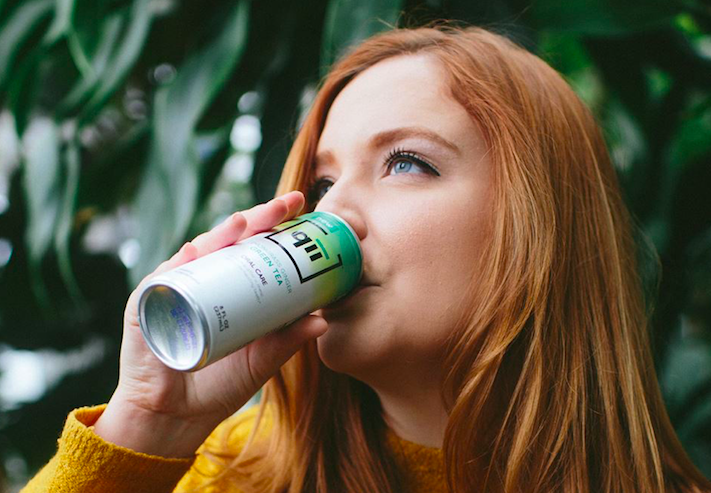
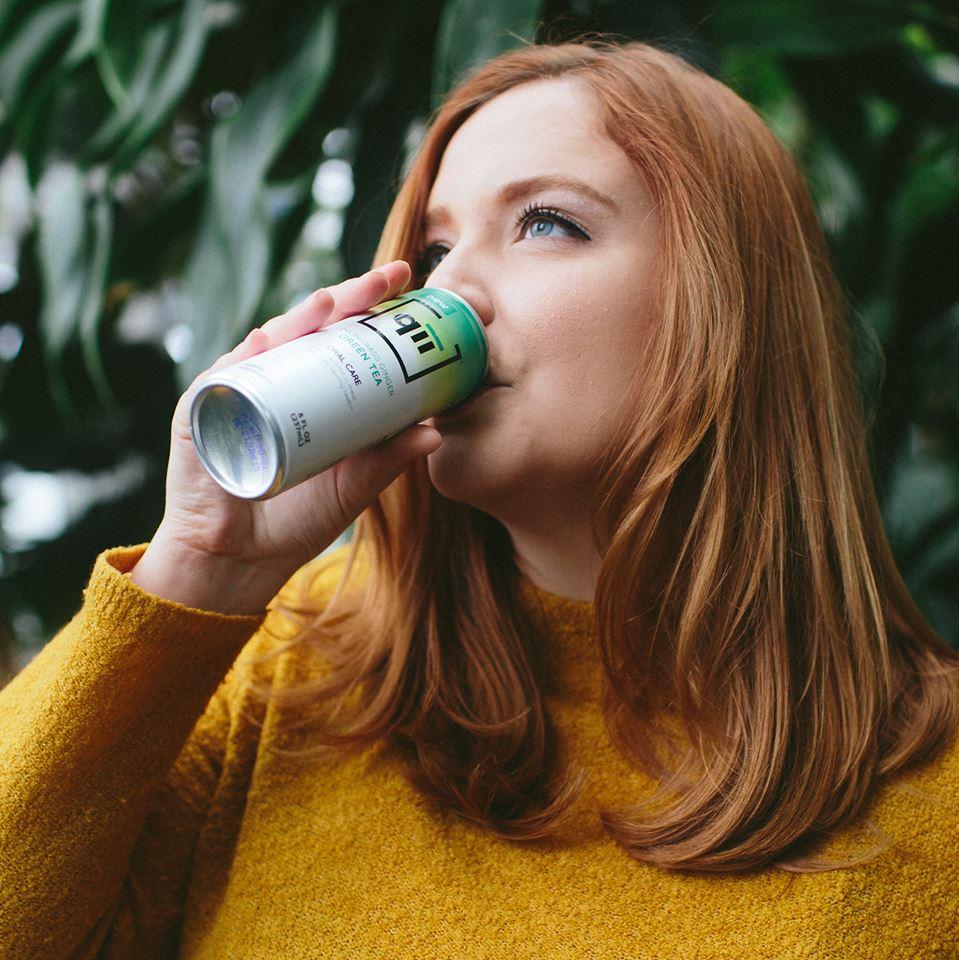
JLABS is a Johnson & Johnson-run incubator that seeks healthcare-oriented startups; one success story is qii, a tea developed to fight cavities.
Editor's Note: This story is part of an editorial series featuring companies on CR Magazine's 20th annual 100 Best Corporate Citizens ranking, which recognizes outstanding environmental, social, and governance (ESG) disclosure and performance among the Russell 1,000 Index. You can follow the series here.
Aspiring entrepreneurs — listen up! This is the proper way to embark on your startup venture.
The scene: Ted Jin, a successful brand manager for Proctor and Gamble, had been working in the oral care field for a few years. He had that itch all entrepreneurs are familiar with: the need to create and innovate instead of maintaining the status quo.
In 2016, when this story takes place, research on the microbiome of the human body was just starting to take off. As it turns out, there are as many foreign cells in and on your body as there are native cells in your body. It’s unsurprising, then, that they have dramatic effects on your life and health.
Ted wasn’t just a pretty face. He was involved in product development and kept abreast of advancements in his field. Ted was a subject-matter expert. When news of the importance of our gut microbiome began to break, he wondered how important those microflorae were at the first step of the gastrointestinal tract – the mouth.
His next step is what distinguishes him as an entrepreneur.
Ted could have brought it up at the quarterly meeting where it would be put at the end of a list of innovations to explore. But Ted didn’t want to wait. He sensed that the iron was hot.
So he struck.
Ted left P&G and founded DoseBiome with little more than a hunch. He bet the farm on xylitol, a sugar substitute derived from plants that is commonly used to flavor gum and other zero-calorie snacks. A little-known benefit of xylitol is its ability to inhibit plaque formation, thus protecting teeth and gums from several common mouth diseases.
There was a catch, of course. Xylitol isn’t the kind of compound that hangs around. It’s carried off down the gullet via saliva every time a person swallows, so the effect is usually minimal. The trick was to get it to stay.
That would require a lab and lots of equipment, both of which carry a pretty steep price tag. Some businesses can be bootstrapped, but health startups are not one of them. Ted sought funding, as many entrepreneurs do, and landed on JLABS.
JLABS is a Johnson & Johnson-run incubator that targets healthcare-oriented startups. He applied to the program and was accepted, in part due to his experience in the field and the potential of his research. The incubator offered funding, mentorship, and lab-space complete with all the tools he’d need to get started.
Being accepted to an incubator is no small feat, but Ted didn’t rest on his laurels. He found six more quality team members and, together, they developed XyVita. This revolutionary compound solved the main primary drawback of nature’s Xylitol – it stuck around long enough to be of use in protecting us from plaque.
The next part was easy — make it into a tasty beverage so as to make to make the already-healthy choice an appealing one too. It’s convenient that the base compound was already sweet, so they only had to choose an appropriate drink to add it too.
The DoseBiome team settled on tea, which illustrates that they considered their target audience well. Tea is not only a popular beverage, but it’s proven to be healthy, so DoseBiome took the opportunity to double-up on their healthy-choice offering, making a product irresistible to health-conscious consumers.
The result was qii, a XyVita-infused tea that comes in five flavors: Lychee, Oolong, Pomegranate, White Peach and Lemongrass Ginger. I can confirm that Lychee, at least, is pretty tasty.
Getting a product to market is very difficult, and DoseBiome wisely leaned heavily on the expertise of their JLAB mentors to navigate the complexities of getting a beverage through not only manufacturing, but the regulatory hoops. Taking a food item that you developed all the way to store shelves is a daunting process, especially without an experienced coach to guide you through it.
You can now find qii throughout the U.S., available online, in health stores and some specialty grocery stores. By all accounts, Ted and DoseBiome are successful.
In true startup spirit, however, they didn’t stop there. They’ve raised additional funds, more than $4 million, and plan to continue developing new products instead of just riffing on their old ones. There’s a lot more to discover in the field of microbiome research, and DoseBiome will be at the forefront of it.
Image credit: qii/Facebook
Is Neurodiversity Part of Your Company's D&I Strategy? Here's Why It Should Be


This article series is sponsored by DXC Technology and produced by the TriplePundit editorial team.
For Professor Cheryl Dissanayake, a leading autism researcher, it makes inherent sense that companies would include neurodiversity in their diversity and inclusion (D&I) strategies as a business investment, a societal obligation and a basic human rights issue.
For those new to the topic, neurodiversity refers to recognizing and respecting neurological differences—including diagnoses like autism, attention deficit disorder and post-traumatic stress disorder—the same way we do other differences. Yet too few companies are embracing the opportunity to bring neurodiverse individuals into the workplace, Dissanayake told TriplePundit.
As founding director of the Olga Tennison Autism Research Centre at La Trobe University, Australia’s first research center dedicated to autism, her life's work has been devoted to improving the lives of people on the autism spectrum—including in the workplace.
“We now know that brains grow differently, and that these differences represent a diversity of talents and skills which have previously not been recognized,” Dissanayake told us. “People on the autism spectrum have never had a voice—but now they do.”
Thanks to pioneering advocacy groups and researchers like Dissanayake, that voice is growing stronger. And a growing number of companies like DXC Technology, SAP, Microsoft, EY and others are making the case for why neurodiversity should be part of the way companies address D&I.
Hiring neurodiverse individuals has been shown through studies by La Trobe University and others, including the Harvard Business Review, to present a competitive advantage for companies, said Dissanayake, who has specialized in autism research since 1984.
“But not enough companies are recognizing this opportunity,” she told us. “It tends to be the big multinational companies and hasn’t really filtered into the small- and medium-sized companies and their workplaces.”
It comes down to a lack of awareness and knowledge about what people on the autism spectrum can bring to the workplace, Dissanayake said. “It’s all relatively new, and companies need to better understand the practices that would best support hiring and retaining neurodiverse people, especially those on the autism spectrum,” she told us.
Changing mindsets
The typical job advertisement and interview process is probably not the best way to attract people on the spectrum, even though this is the established way of on-boarding employees, Dissanayake explained. A typical job advertisement “is really broad," she said. "If it could be written in such a way as to really highlight the skills needed in that position, the potential job candidate on the autism spectrum could actually see themselves in that job."
Too often, however, job ads emphasize social and communication skills, such as being able to engage with other people and fit in with the team, rather than focusing on the day-to-day job a company needs done.
“We don’t see the skills that an individual can bring to the job with this approach," Dissanayake explained. "We tend to judge [applicants] by these social and communication skills, which many people on the autism spectrum struggle with. We need to open up our systems to be able to accommodate those differences, and to assess people based on their skills and abilities rather than social and communication skills.”
For a successful diversity and inclusion strategy that embraces neurodiversity, “We really need to look at hiring practices and break down what skills are actually needed to perform the job, and then bring in people who have the skills and ability to do that job," she continued. "It’s also about changing mindsets—not only that of the company as employers but also the entire workforce, the teams and direct managers. “
For Dissanayake, it is important for everyone to recognize “that we carry around inherent biases," she told 3p. "We need to be made aware of them and be explicit about them, so we can address them. It needs to work at every level: How can we change our assumptions and not only get people on the autism spectrum into a job, but [also help them] retain those jobs? In other words, not just employ them, but how do we allow them to succeed and actually build careers?”
Tackling issues head-on
Dissanayake has worked closely with DXC Technology, which she considers a leading company in including neurodiversity in the workplace. Since 2014, through its Dandelion Program, DXC has been working to increase technology employment opportunities for people on the autism spectrum and capitalize on their innate skills.
“What we’ve learned in our work with DXC and others who are employing people with autism is that success is about the environment and the person’s fit, making sure the person with autism is supported in the workplace, so that any issues that come up can be addressed quickly and on the spot,” Dissanayake explained.
She describes “reasonable accommodations” that can be made so that everyone is comfortable and can focus on their jobs. For example, people on the spectrum often have sensitivity to light, sound or smells, she said. “By understanding that, we can for example, suggest that one employee wear headphones, another wear a hat to block LED lighting,” or that co-workers refrain from using perfume, she continued.
“It’s not just about getting neurodiverse people to fit the workplace, but the other way around—making the workplace fit neurodiverse people."
In pursuit of deeper insights
More research is needed to advance understanding of autism at work, Dissanayake argued—“not just around the person, but understanding the ecosystem of the workplace and the elements that are needed in that ecosystem to foster inclusion," she explained. "It’s necessary to take a 360-degree view to understand all those elements.”
For example, many—although certainly not all—people on the spectrum tend to have excellent attention to detail and the ability to carry out repetitive behaviors, Dissanayake explained. “We need to understand: What are the kinds of skills that make these individuals ideally suited to STEM [science, technology, engineering and math] jobs, and what kinds of cognitive skills underlie that aptitude? Very little research has been done in this area to date.”
Further, “There needs to be an organizational psychology approach to understanding the organizational processes that can engage or disengage the employment of neurodiverse people. What are the enablers and key barriers that can help us identify the opportunities and better manage the challenges?”
Eventually, Dissanayake said she would like to see the development of a series of instruments that would assess the skills of people on the autism spectrum and examine the workplace and the environment to ensure an even better fit between potential employee and workplace.
Confronting a societal challenge
Despite the business opportunity associated with integrating neurodiversity into corporate D&I strategies, it won’t be possible to really change the status quo for neurodiverse individuals and others with disability until the problem is tackled “at a much higher systemic and policy level," Dissanayake said. "We need a recognition that hiring neurodiverse individuals is not only a benefit to them, the workplace and the business, but also to governments and society at large. The right to work is a basic human right.”
Many countries, like France, Germany and, more recently, China, have enacted employment quota systems which mandate public and private companies to reserve a certain percentage of their positions for disabled persons. There are also penalties in some countries for employers which do not comply.
In China, when regulators introduced incentives for meeting the quota, companies were incentivized to pay attention to the law, the Financial Times reported. Companies that did not meet the quota now pay financial penalties based on how far they have fallen short of their obligations. These payments help support training and services for disabled people.
“To me, this makes inherent sense,” Dissanayake said, “that companies which do not do their share to employ people with disabilities should have to pay a tax that supports the lives of these individuals."
In conclusion, Dissanayake urged companies to think beyond the business case for neurodiversity—as compelling as it is—to consider the broad-sweeping societal impacts that underpin all D&I efforts.
“Yes, it makes sense to have neurodiverse people in your workplace and by doing so, you are making a contribution," she said. "But at the systemic level, it makes sense, too, as that person is contributing to the GDP of the nation. These kinds of incentives enhance the possibility that neurodiverse people and those on the autism spectrum have a fair chance at employment, just like the rest of us.”
Image credit: The Gender Spectrum Collection by Broadly and Capitol Standard/Unsplash
For Ball Corp., Recycling and Climate Action Go Hand-in-Hand
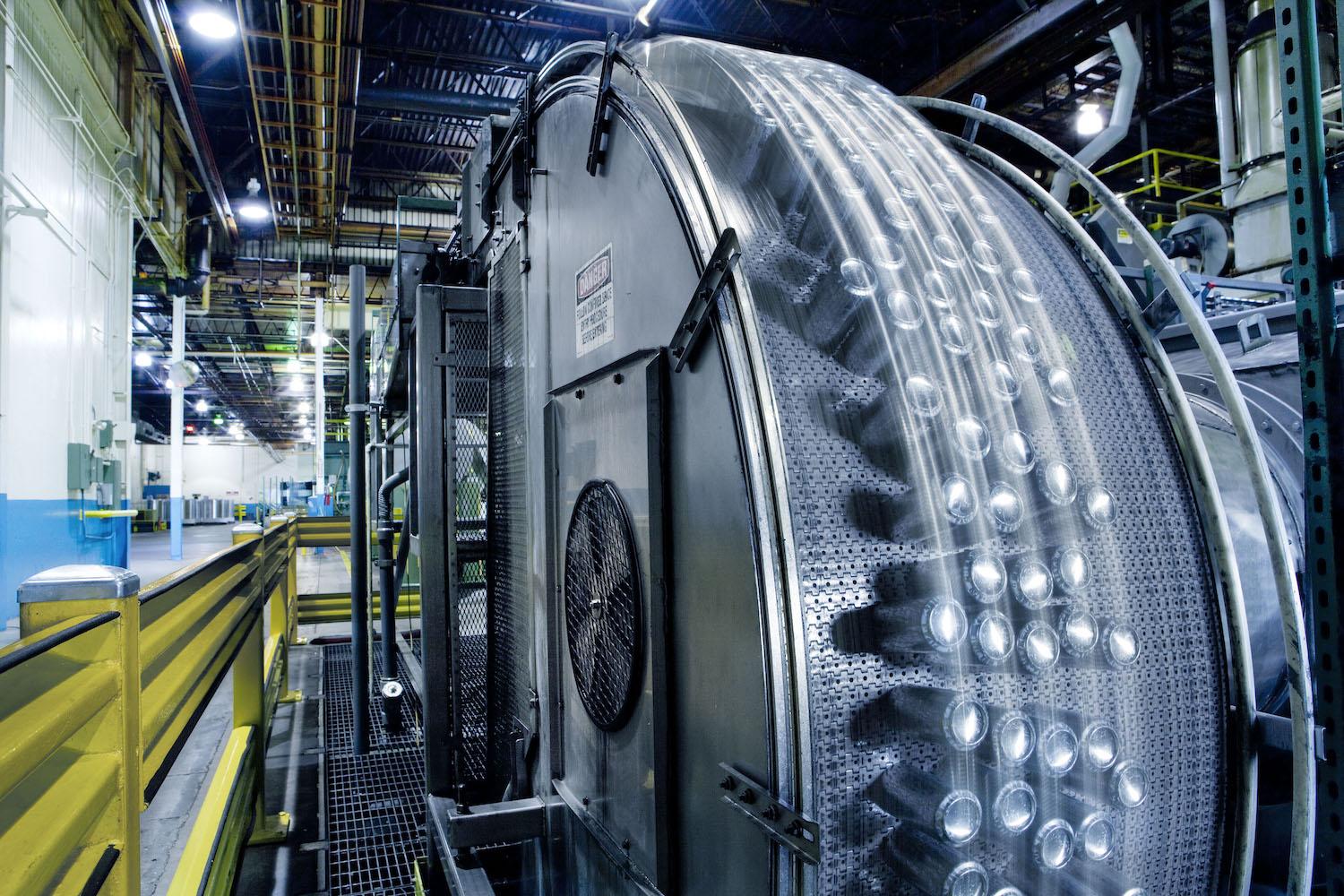
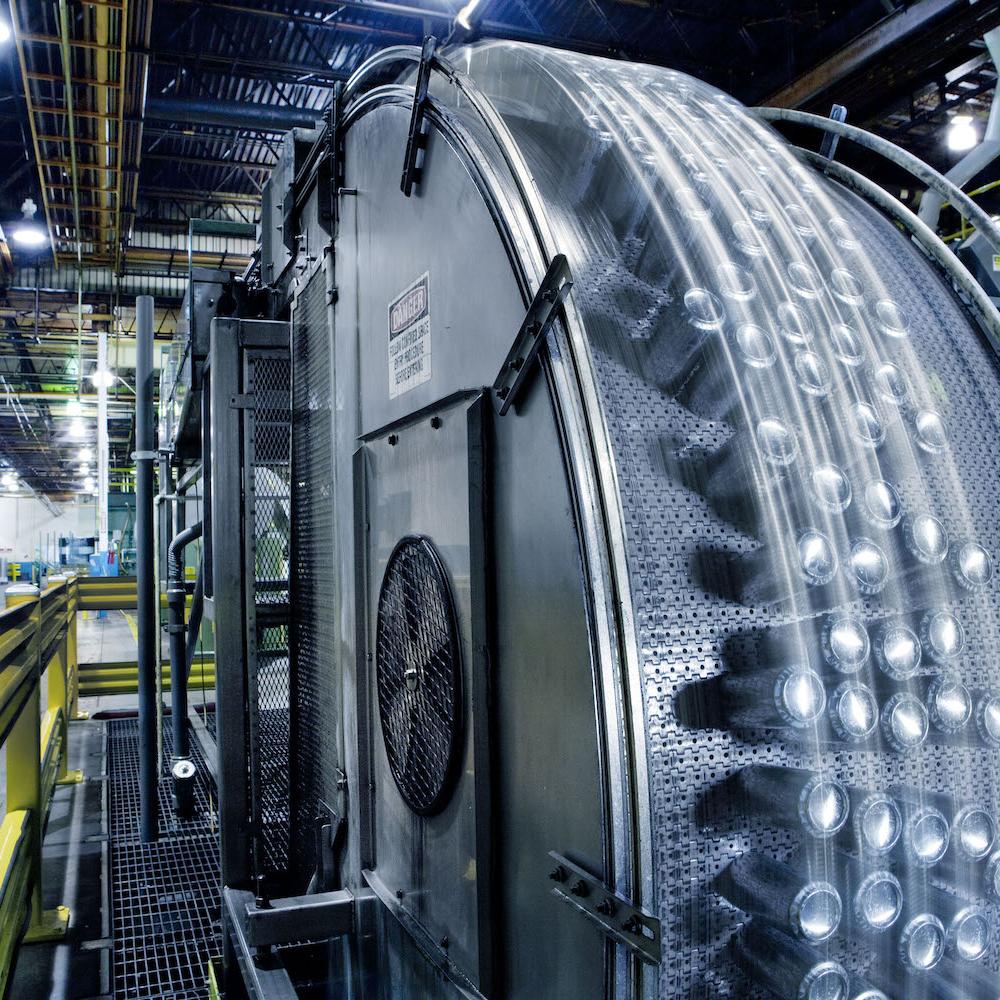
Editor's Note: This story is part of an editorial series featuring companies on CR Magazine's 20th annual 100 Best Corporate Citizens ranking, which recognizes outstanding environmental, social, and governance (ESG) disclosure and performance among the Russell 1,000 Index. You can follow the series here.
Under the 2015 Paris climate agreement, nearly every national government put forth plans to cut greenhouse gas emissions and collectively cap global temperature rise at "well below" 2 degrees Celsius. But as the New York Times reported in December, many are off track in achieving their goals. Further, even if every nation reached their climate targets, we'd still be on a path for warming in excess of 2 degrees Celsius, according to Climate Action Tracker, an independent scientific analysis that has tracked climate action since 2009.
As we report frequently here on TriplePundit, private-sector engagement is needed to fill this gap. And a growing number of companies are stepping up to the plate with science-based emissions targets that support the fight against climate change. Only the most ambitious corporate targets are accepted by the Science-Based Targets Initiative (SBTi), a partnership between CDP, the U.N. Global Compact, the World Resources Institute and WWF.
Only 210 companies have approved science-based targets on the books. Ball Corp., which manufactures metal packaging and provides aerospace technologies and services, may soon join these elite ranks, sustainability leaders at the company recently told TriplePundit.
As 3p's Tina Casey reported last week, the Broomfield, Colorado-based company has ramped up its renewable energy procurement over the past four years. Two recently-inked power purchase contracts will allow the company to source renewables for all of the electricity used in its corporate, packaging and aerospace operations in North America by the end of 2021.
Beyond purchasing renewables, there's a lot of behind-the-scenes strategy that goes in to setting science-based emissions targets. We spoke with Ball's director of global sustainability, Bjoern Kulmann, to get an inside look at the process.
Ball Corp. pursues science-based targets
The company initiated the process for setting its target back in 2016. In August of last year, it published its goal to reduce absolute Scope 1 and Scope 2 emissions by 27 percent by 2030. Ball expects the goal to be approved by SBTi by the end of this year, Kulmann said.
For those less familiar with GHG lingo, Scope 1 refers to an organization's direct emissions, while Scope 2 refers to emissions associated with the generation of purchased electricity. Ball also reports on its Scope 3, or indirect supply chain emissions, and seeks out ways to mitigate them, Kulmann said. "We work with many of our customers, as well as suppliers and others, to understand their GHG emissions profile strategies and ensure that we do not develop our strategy in isolation," he explained.
The process involves plenty of information-gathering, which led Ball to a two-pronged approach to reduce GHGs. "When you look at the value chain of our product, it's fairly easy to see that the majority of greenhouse gas impacts occur upstream," Kulmann said, referring to metal production. "We know from lifecycle assessments and analyzing the environmental impacts of the carbon footprint of our products that there are two main levers to reduce those impacts."
One of those levers is lightweighting—or reducing the volume of material used in packaging—and in this area Ball is already ahead of the game. The company has decreased the weight of its most-sold packaging—aluminum beverage cans—by around 40 percent over the past 40 years, and it has additional programs underway to further lightweight the can. "But we also understand there are limits to that," Kulmann said.
Recycling represents the other proverbial lever Ball aims to pull in order to reduce its GHG impacts. "By recycling aluminum, you save about 95 percent of the energy that's required to produce aluminum from virgin bauxite," Kulmann explained. "In many parts of the world, we work with our customers—and in many instances, also with our suppliers and other brands—to figure out how we can increase beverage can recycling rates."
Making the connection between recycling and climate action
"For our material, the greenhouse gas emissions question and the recycling topic are very closely interlinked," Kulmann said. Fortunately for Ball, its most commonly used material—aluminum—receives top marks for recyclability. It's infinitely recyclable and has retained a high value as a recycled material, even as the economics of recycling become strained in markets such as the U.S.
"We know that in many countries, recycling rates are really high for beverage cans," Kulmann said. "But we also understand that we are not perfect and that in certain markets‚ in particular the U.S., there's room for improvement." Though U.S. recycling rates for aluminum are higher than for other forms of packaging, they still hover around 50 percent—meaning roughly half of this infinitely recyclable material still ends up in landfills.
Ball is working with its customers, including big-name beverage labels like Coca-Cola and PepsiCo, to increase recycling rates in the U.S., Kulmann said. It also engages with groups like the Recycling Partnership to drive waste diversion efforts and ensure more American households have access to recycling.
Delivering real impact
As consumers grow more aware of modern society's dependence on single-use packaging—and the resulting impacts on people and the planet—we've seen a number of companies set new goals around recycling in recent years. Common targets may sound something like, "All of our packaging will be recyclable by 2030." But Kulmann said these ambitions do not go far enough.
"The current discussion is sometimes a bit problematic," he told us. "Right now, everybody is coming out with some sort of recyclability goal. But what does that really mean? In theory, everything is recyclable. The question is: In real life and with the current technology, is the material being recycled? That’s where the rubber meets the road."
In its 2018 sustainability report, Ball called on its peers in the packaging and packaged goods industries to go beyond recyclability targets and work together to create better products and packaging.
"We believe that society and industry at large should aim for recycling rates close to 100 percent for all products," the report reads. "Instead of focusing on making products as cheap as possible and a little less harmful, products must be designed so that they are recycled easily and infinitely."
It may be some time before we realize a truly circular economy—in which materials are reused and recycled time and again, and nothing becomes waste. But, as this story demonstrates, the urgency of climate action may drive progress as companies look toward recycling to tackle their value-chain impacts. And such strong words from a company like Ball—which works with some of the largest packaged goods brands in the world—can further accelerate this push, both within and beyond the company's reach.
"What we are really trying to push is a holistic view—in terms of not just looking at certain issues in isolation but really looking at the entire lifecycle of a product, and also competing products, to understand where the benefits and the weaknesses of our product are and how we can address those and further improve," Kulmann said. "I think we have a pretty good story to tell, but we also know there's room for improvement."
Image courtesy of Ball Corp.
13 Major Companies Call On Congress To Accelerate Climate Legislation. Here’s Why.

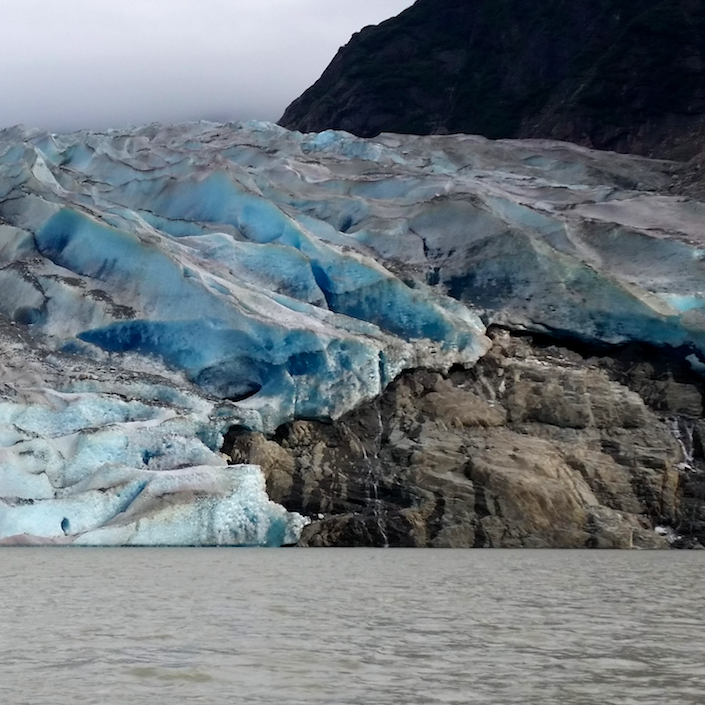
Corporate America is setting – and meeting – increasingly ambitious climate and clean energy goals. But the hard reality is that individual corporate action, no matter how big, won’t solve this great climate crisis.
In order to avoid the worst impacts of climate change, we need public policies that harness the power of the whole economy to drive down emissions by putting prices and limits on climate pollution.
Businesses that are sincerely interested in protecting our health, economy and future from the ravages of climate change must join this national public policy discussion. We need companies to lead, not follow, Congress.
That’s why it’s big news that 13 major companies have now joined four nonprofit organizations, including Environmental Defense Fund, to form the core of a new effort to push for climate policy. The CEO Climate Dialogue initiative involves major food brands, powerful utilities, and one of the nation’s leading car companies. Our goal is to turn the power of the marketplace towards addressing this crisis.
Together we have proposed six Guiding Principles for federal action on climate change. These principles center on an economy wide carbon pricing policy as the best way to meet climate targets and incentivize innovation and investment in clean energy technologies and solutions – including ways to absorb or remove climate pollution from the atmosphere.
They also highlight the need for setting aggressive climate targets and designing policies that focus on outcomes, deliver predicable results, are adaptive over time, promote equity, and do no harm to our economy or our nation’s biodiversity.
Why are environmental groups celebrating these corporations’ commitment to push for action? Because to enact real change – to push it through a Congress that requires bipartisan support to pass major legislation – we need all the political power we can get. We absolutely need environmental advocates, like supporters of the Green New Deal and 100% clean energy. But we also need major economic voices.
The reality of politics is that durable and effective change comes from broad coalitions. We need them not only to enact change, but to help prevent it from being undermined next time the political pendulum swings, as it always does.
This is not the first time companies have stepped forward to help push for comprehensive climate legislation. In launching this new initiative, we are trying to learn from past experience. For instance, this group is determined to work with all those who share our goal of solving the climate challenge, and committed to working with lawmakers on both sides of the aisle to develop effective policies rather than offering a predetermined policy solution.
The Guiding Principles provide a basis for companies to make their support for ambitious climate action heard on Capitol Hill, and Environmental Defense Fund will continue to work towards achieving net-zero emissions.
The most powerful tool companies have to fight climate change is their political influence. It’s great to see several starting to use it.
We are looking to recruit more CEOs from major companies who want to tackle a multi-trillion dollar threat to our economy and public health. And who need to get ahead of the competition and be ready for a changing landscape. And who have to respond investors, employees, and customers who are starting to demand climate action.
Most of all, we are looking for business leaders who want to tell their grandchildren they acted while there was still time.
Previously published on the EDF+Business blog and the 3BL Media newsroom.
Image credit: Matt Artz/Unsplash
GM Keeps Boosting the Energy Efficiency of Its Buildings
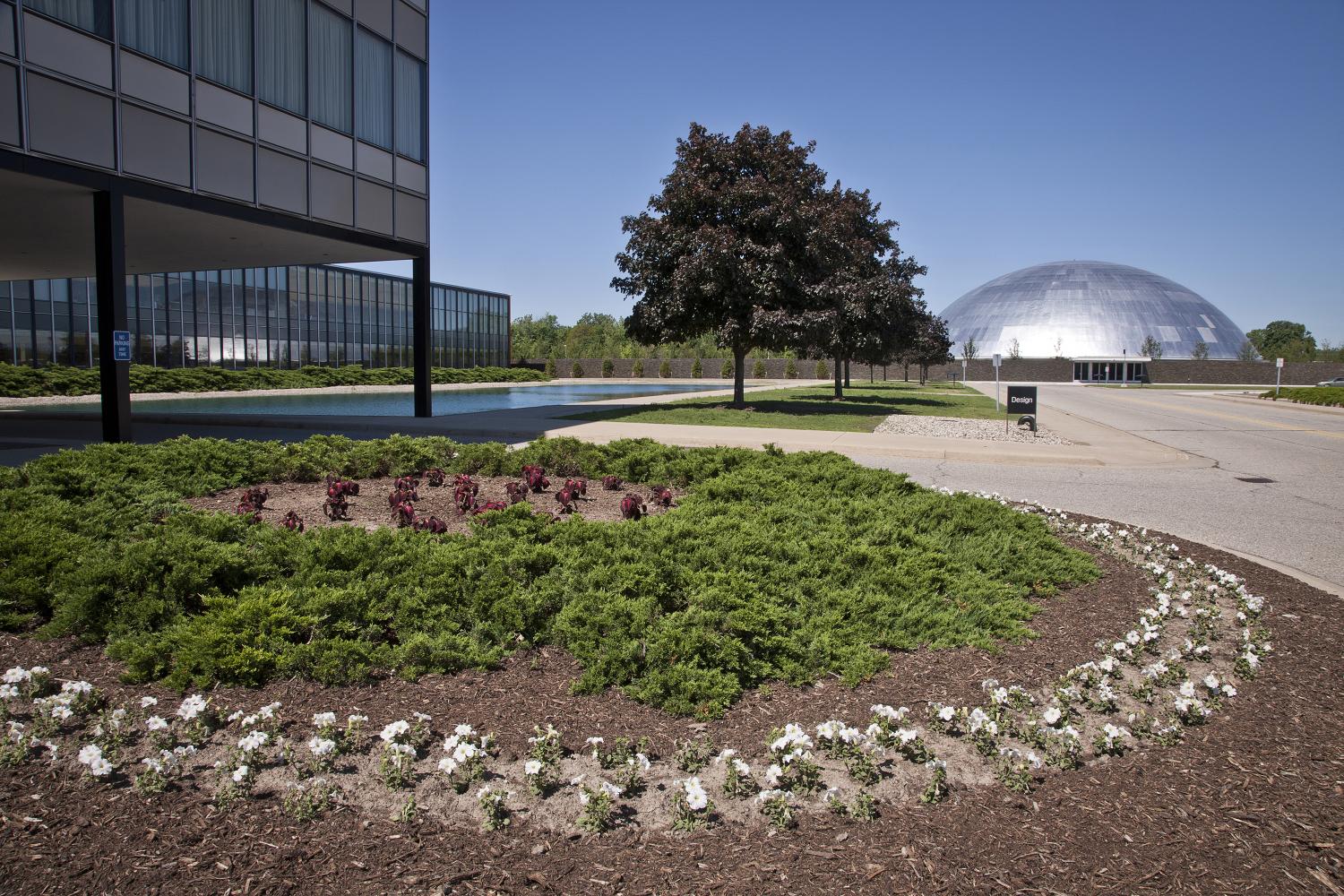
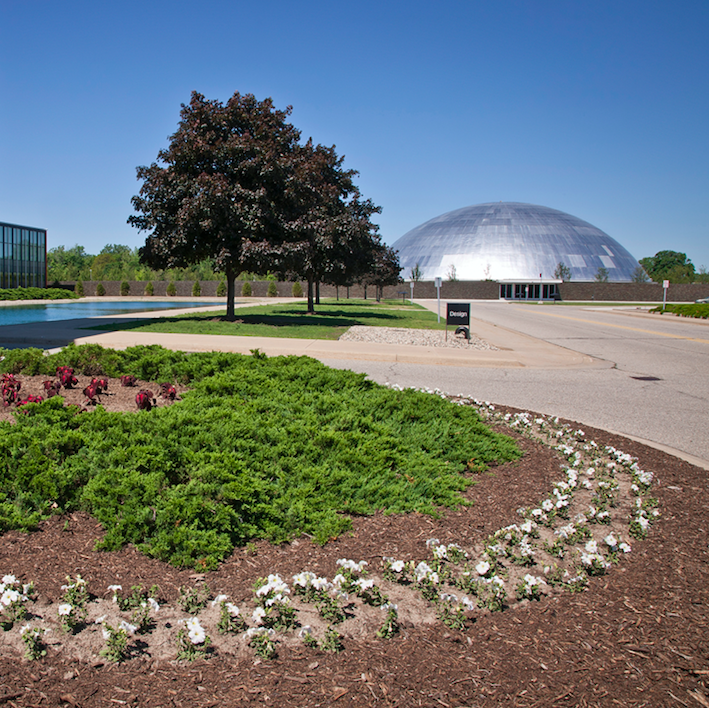
There is one aspect of sustainability at GM that doesn’t fall into the media spotlight: the improvement of energy efficiency within its buildings.
Editor's Note: This story about energy efficiency at GM is part of an editorial series featuring companies on CR Magazine's 20th annual 100 Best Corporate Citizens ranking, which recognizes outstanding environmental, social, and governance (ESG) disclosure and performance among the Russell 1,000 Index. You can follow the series here.
The highly praised Chevrolet Bolt has provided General Motors (GM) with a high-profile pathway into the headline-grabbing world of electric vehicles. The company’s clean power initiatives have also garnered media spotlight. Just as importantly, though, GM has been working to share another key aspect of its clean tech journey that doesn’t often catch media attention: energy efficiency in buildings.
After all, transportation is not the only sector responsible for a large portion of human-related carbon emissions. Buildings also play an important role. Here in the U.S., for example, residential and commercial buildings account for roughly 40 percent of total energy consumption.
Partnering to promote energy efficiency
Efficiency-aware manufacturers like GM face a messaging challenge. They get copious amounts of press when they roll out their new models, but their work on building energy efficiency often takes place behind the scenes.
One effective way to get the message out is to partner with local stakeholders on energy-efficiency campaigns. In GM’s home state, for example, the U.S. Green Building Council of West Michigan created the Michigan Battle of the Buildings campaign to shine a spotlight on best practices, including low-cost and no-cost initiatives.
Last year more than 1,000 buildings entered the friendly competition. GM garnered the coveted the first place “Biggest Loser” title in the Warehouse/Distribution category, for a 23 percent cut in energy use at its CCA Flint IE Lab. The company also won second place in the same category for a 20 percent reduction at its Grand Blanc Center, and second place in the water category for a 49 percent reduction at its Heritage Center.
As described by GM, achieving the impressive, double-digit energy efficiency improvements over the course of one year is not rocket science. Off-the-shelf, proven technology does the trick: “Specific examples include converting lighting to LEDs, sealing up building envelope, replacing broken thermostats and gas regulators, modifying heating units to reduce outside air, reducing burners and scheduling units to maintain setpoints for occupied and unoccupied times.”
Acting locally, and acting globally
Government partnerships provide another messaging pathway. One good example in that area is the EPA Energy Star program. The long-running initiative includes certification for buildings and plants, as well as the more familiar home appliance categories.
Last month, GM received the program’s highest recognition for energy management, the 2019 Energy Star Partner of the Year Sustained Excellence Award.
The automaker has received the award eight times since 2010, when it stepped up its energy savings commitment. As of 2018, 17 GM buildings in the U.S. were certified by Energy Star, including two data centers and the company’s iconic mid-century Technical Center in Warren (pictured at the top of this story) designed by Eero Saarinen over 60 years ago.
GM also has eight additional buildings under certification through its participation in the global Energy Star Challenge for Industry.
Sharing best practices between sectors
GM also participates in the Department of Energy’s Better Buildings initiative for energy efficiency. Better Buildings doesn’t often make the front page, but it has significant influence within the built environment space. Its participants account for approximately 12 percent of the manufacturing footprint in the U.S., totaling 2,900 facilities in all 50 states plus Washington, D.C. and Puerto Rico.
Like the Green Buildings Council, Better Buildings has been drawing from pop culture for publicity. Four years ago, it borrowed the “swap” model from a reality TV show for its online video series, “Better Buildings SWAP.” The series challenges pairs of energy management teams to provide solutions for each other.
The fourth installment aired last year, featuring a management team from GM. The team stepped in to assess energy efficiency at L'Oréal USA’s largest cosmetics plant, located in Little Rock, Arkansas. In addition to providing energy-saving insights to L’Oréal, the team gleaned some inspiration for new employee engagement strategies at GM.
Meanwhile, a management team from L'Oréal USA assessed GM’s Detroit-Hamtramck Assembly plant. They spotted energy-saving opportunities in several areas including the facility’s compressed air systems. They also came away with GM’s "energy-efficiency treasure hunt" strategy for employee engagement at L’Oréal.
The swap format strategy seems to be paying off. According to the Energy Department, over the past few years the SWAP videos have accumulated more than 4.7 million views.
Later this month, we’ll continue discussing GM’s energy-efficiency work by focusing on the automaker's various partnerships with utilities.
Image credit: GM Corporate Newsroom
P&G Sustains Business by Harnessing Sustainability Values
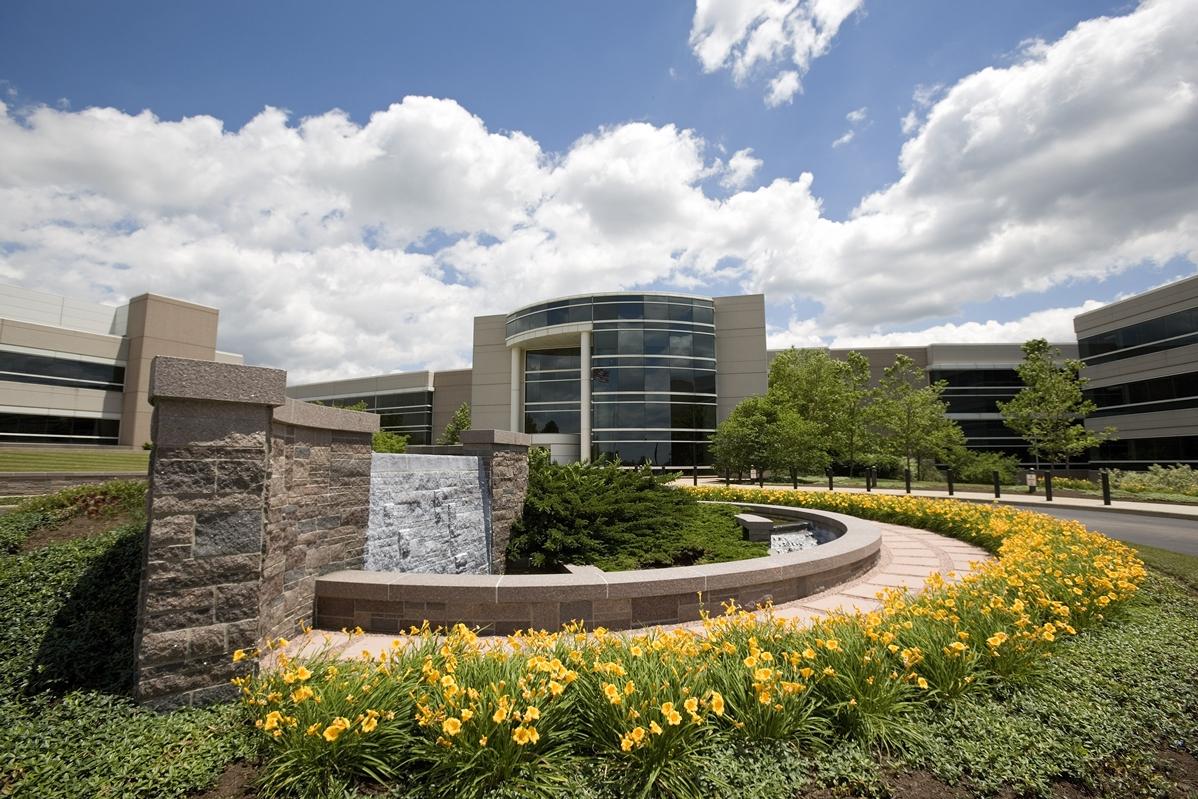
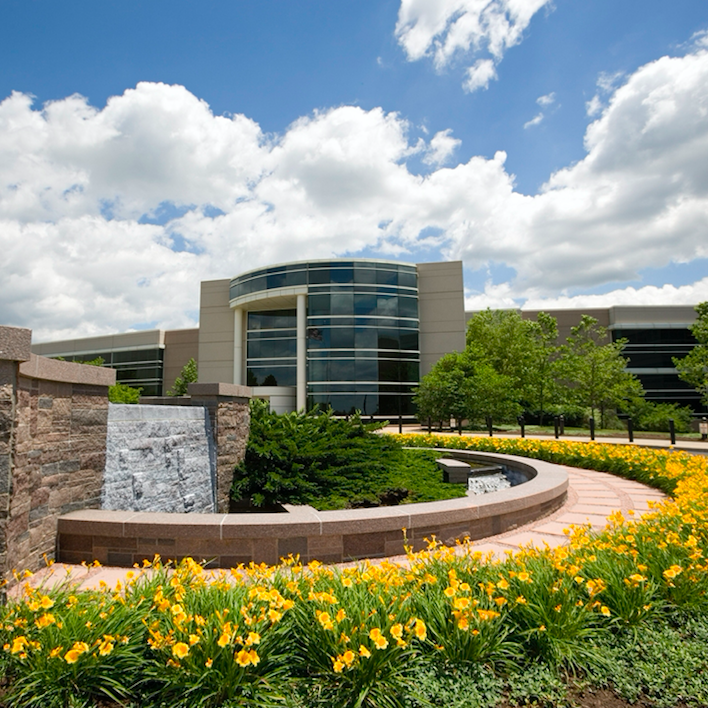
P&G has been driving force in harnessing sustainability values within the company's decision-making processes.
Editor's Note: This story is part of an editorial series featuring companies on CR Magazine's 20th annual 100 Best Corporate Citizens ranking, which recognizes outstanding environmental, social, and governance (ESG) disclosure and sustainability performance among the Russell 1,000 Index. You can follow the series here.
There’s a recent trend of companies taking an interest in the ways they can have a positive impact on their customers, their employees and the environment. There’s no reason not to, since evidence suggests such an approach is more profitable in the long term. It’s no surprise to see a legacy company like Procter & Gamble included in this business shift.
P&G, the parent company behind dozens of household brands such as Tide, Gillette, Pampers, Febreze and Olay, has long been a global leader in the consumer packaged goods (CPG) industry and also a driving force in including corporate social responsibility principles in decision-making processes.
One of the most notable examples was in 2014 when the company discovered child labor was being used in trash-picking operations that ultimately wound up in its recycling supply chains. P&G responded immediately and effectively by “establishing schools, enrolling and supporting affected children in the schools, launching mobile health clinics, developing skilled workshops and compensating parents for loss of income,” according to the company.
Most recently is P&G’s leading role in the formation of the ambitious Alliance to End Plastic Waste (AEPW). The Alliance is a coalition of dozens of global companies, including ExxonMobil, LyondellBasell, SUEZ, Shell, Veolia, and other companies within the plastics and consumer goods value chain. Their goal is to eliminate plastic waste in the environment, with their primary focus being on ocean plastic pollution.
They have pledged $1 billion to fund solutions in the following areas:
- Infrastructure development to collect and manage waste and increase recycling;
- Innovation to advance and scale new technologies that make recycling and recovering plastics easier and create value from all post-use plastics;
- Education and engagement of governments, businesses, and communities to mobilize action; and,
- Clean-up of concentrated areas of plastic waste already in the environment, particularly the major conduits of waste, like rivers, that carry land-based plastic waste to the sea.
That sounds swell, but big international groups of VIPs pledging to work against climate change or plastic pollution isn’t really a new concept. What makes AEPW different? For one thing, it’s a self-motivated endeavor. Neither the United Nations nor any government mandated the formation of the group or even required the represented companies to spend money to mitigate environmental damage in this fashion.
Few people, if anyone, have a clearer perspective on the scale of manufacturing—and thus the scale of the problem—than these executives. Even fewer people have the power to influence the behemoth industries they represent. They stepped up to the plate because they saw the necessity of change and were the only ones in the position of being able to affect it.
Then again, it’s not the first time that companies have made audacious claims and failed to deliver. Many of the companies included in the Alliance have checkered pasts. Suez, for example, failed to meet even the most basic water quality and accessibility standards in its contract with the Bolivian government, directly impacting tens of thousands. ExxonMobil was made infamous by the Valdez oil spill, which still isn’t fully cleaned up to this day, a full 30 years later.
In a world where greenwashing is so prevalent, it’s possible that the AEPW is just another ruse to distract and placate. The unfortunate reality is that many will take these renewed promises with a grain of salt. Praise should be reserved until we see the results of their actions.
Still, I’m optimistic.
P&G in particular has been making excellent, and actionable, strides. Its Ambition 2030 project, unveiled last year, has already started addressing social and environmental injustices within the company's scope of influence. Changes to not only product design, but also supply chain sourcing and infrastructure was coupled with education and training of employees, which in turn enriches the communities where the company operates.
The year before that saw P&G unveiling a gender equality campaign aimed at people both internal and external to the company. Some components of the program included 50/50 representation at all levels of the company, empowering women-owned businesses and introducing paternity leave. It was a massive success on all levels, and the Association of National Advertising lauded the company's commercial series that fought the trend of portraying women negatively.
P&G’s CEO David Taylor will serve as chairman of the board of the Alliance to End Plastic Waste. He’s the same man who wrote an essay entitled, “The Courage to be Uncomfortable." Given the success of the recent P&G projects under his leadership, it’s encouraging that Taylor will be leading the AEPW into what will certainly be an uncomfortable transition to a more sustainable global economy.
Image credit of P&G facility in Mason, OH: Procter & Gamble
New Tools Help Companies Fight Against Deforestation
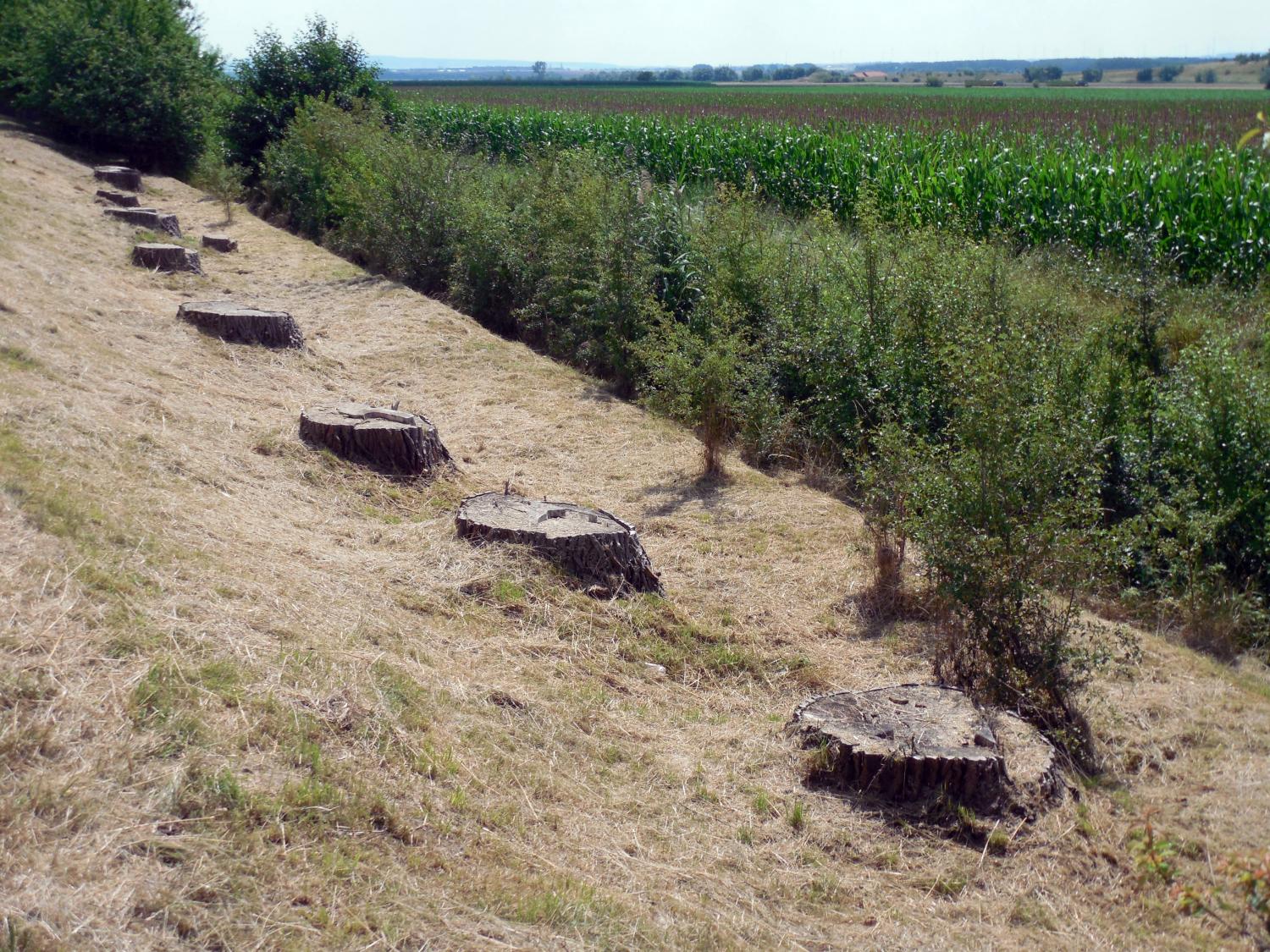
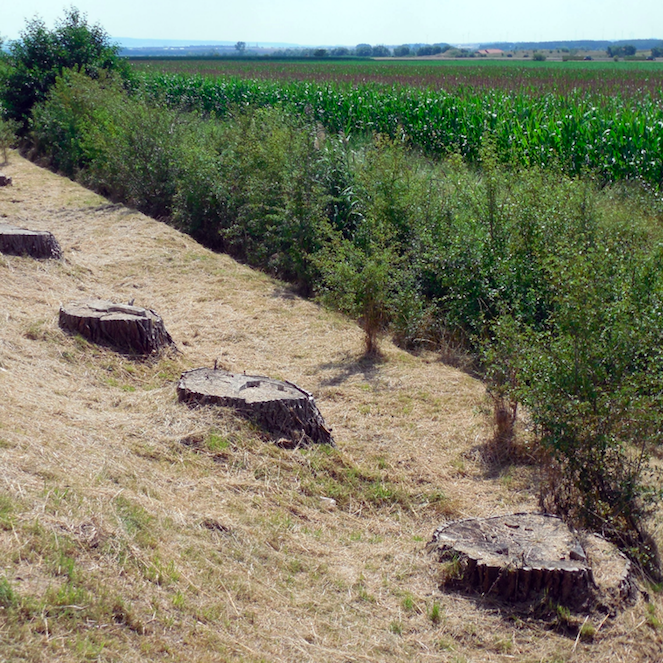
We see more news about deforestation every day. Here are some takeaways for companies seeking to remove this problem from their supply chains.
Every day, we see another article about forests disappearing in the Amazon. This coverage shines light on a significant global problem that is only intensifying. With all the bad news, I was especially energized to attend the Tropical Forest Alliance 2020 (TFA 2020) Annual Meeting last week, where around 200 passionate people gathered to promote a forest positive future.
Attendees included high profile government officials, including remarks from Colombian President Iván Duque Márquez, NGOs like Conservation International and companies such as McDonalds, Walmart and Cargill.
The major story that emerged revolved around collaboration. The days of working in individual siloes – whether that be government action, civil society campaigns or corporate commitments – are over.
Here are some takeaways and potential next steps for companies looking to collaborate and build on what we discussed at the TFA2020 meeting:
The PCI Pitchbook: a gamechanger for corporate engagement on curbing deforestation
During the event, speakers emphasized the need for effective cross-sectoral collaboration in what is called a jurisdictional approach. This approach ensures that private sector commitments, government policy and NGO actions work in concert to drive sustainable development across a region. The goal is to show that thriving forests and strong economic growth can – and must – go hand in hand.
At the TFA meeting, the Produce, Conserve, Include (PCI) initiative launched its PCI Pitchbook, which aims to help companies learn how
they can support specific actions within Mato Grosso that layer into the jurisdictional strategy. The Pitchbook was created to help answer HOW companies can tangibly engage in jurisdictional approaches.
With the Pitchbook, companies can now select from 11 projects underway in Mato Grosso based on commodities – e.g., cattle, soybeans, cocoa and coffee – and activities for engagement such as financial contributions, technical support or sourcing commitments.
These corporate actions layer into PCI’s broader sustainable development strategy, which was launched in 2015 to protect native vegetation while increasing production on currently cleared land. If Mato Grosso meets its ambitious goals, the state could avoid over six gigatons of emissions by 2030.
Explicitly link forest health and climate health in corporate strategies
Frances Seymour, a distinguished senior fellow at WRI, shared concerning facts about global tree cover loss, and the reality is bleak. Forest loss continues to rise, despite our 2020 commitments to zero net deforestation from the production of key commodities.
While deforestation has severe implications for biodiversity, which was highlighted at the TFA meeting, the climate impact of forests tells an equally urgent story. If forest loss were a country, it would be the second largest emitter after China. Trees also remove about one-quarter of the carbon dioxide emitted by human activities, so fewer trees mean more CO₂ remains in the atmosphere.
This means we need to start sprinting towards results and towards a future with more forests. Without trees, we are cutting ourselves off at the knees in the fight against climate change. Therefore, companies with climate goals need to incorporate forest protection into their strategies.
Think about what’s next after your company’s 2020 deforestation goals expire
For companies with goals to reduce deforestation in their supply chains by 2020, how are you progressing? Consider using the PCI Pitchbook as your guide to actions in Mato Grosso that can help you achieve your goals.
We also need to see continued progress post-2020. Successful companies will continue to learn from past work and drive forward with a more comprehensive toolkit after 2020, which should include supporting jurisdictional approaches.
I’m hopeful that I’ll see more positive news in 2019 from companies that have decided to ramp up their commitments to reduce deforestation in their supply chains. As always, EDF+Business is here to help. For companies just getting started with addressing deforestation in their supply chains, check out the “Thriving Forests” section of our Supply Chain Solutions Center.
Previously published on EDF+Business and the 3BL Media Newsroom.
Image credit: Pixabay
How Hewlett Packard Enterprise Stands Out on Sustainability


Hewlett Packard Enterprise has been leading on tough environmental and social challenges, from the circular economy to human trafficking.
Editor's Note: This story is part of an editorial series featuring companies on CR Magazine's 20th annual 100 Best Corporate Citizens ranking, which recognizes outstanding environmental, social, and governance (ESG) disclosure and performance among the Russell 1,000 Index. You can follow the series here.
You may not hear much about this legacy company, but the offshoot of a Silicon Valley titan has been leading on tough environmental and social challenges from the circular economy to human trafficking.
Hewlett Packard Enterprise (HPE) split from the legacy company Hewlett-Packard in 2015 and incorporated most of the business-to-business product portfolios of the well-known parent company. The San Jose-based company now has two primary divisions—Enterprise, which focuses on servers, storage, networking and consulting—and Financial Services.
Despite the fact that HPE is not a consumer-facing company and faces less reputational risk than many of its peers in the global technology sector, the company has been a leader on several fronts when it comes to sustainability, responsible supply chains and innovation for the greater good.
As a technology company, HPE has ample opportunity to apply the lessons and knowledge that drive its business relationships toward social good. The reason the company has emerged as a reliable corporate sustainability leader is because it has shown a willingness to go far beyond its responsibility to investors and look at how it can help address some of the world’s biggest challenges.
For example, look what the company has done in order to take on food insecurity. In 2018, HPE announced a partnership with the World Economic Forum (WEF) with the goal of solving global hunger by 2030. “HPE and the Forum are like-minded in the belief that by applying emerging technologies we can positively address the agricultural productivity crisis," HPE’s chief technology officer, Mark Potter, wrote in a blog post.
The project aims to bring business know-how, technological innovation and knowledge together through an open collaborative process, focused on addressing this systemic global challenge. As a first step, HPE and the WEF are working with Purdue University's College of Agriculture, which in recent years has focused on food security and the optimization of ag-tech worldwide. Purdue has continued to work closely with HPE in order to boost disruptive technologies, such as IoT sensors, that can help make digital and precision agriculture a reality.
Another area of interest for HPE is the circular economy, which refers to the need to ensure that the sourcing, manufacturing and distribution of products create no waste and can be quickly and sustainably returned to the economy. As more awareness grows of the massive impacts of waste—including the scourge of oceanic plastic pollution—HPE has been working to improve the energy efficiency, materials usage and recyclability design of various products, including those of its customers.
Furthermore, HPE has taken leadership on the ongoing problems resulting from modern slavery. Despite the great economic progress that the world as a whole has made on human trafficking over the past several decades, forced and child labor is still rampant across many companies’ supply chains. The figures are stark—the United Nations estimates that 168 million children are victims of child labor across the world, while the Global Slavery Index estimates that 45.8 million people are enslaved. Many companies are unaware or unable to ascertain if slavery exists in their supply chains.
To that end, HPE says it has been proactive at pushing for better standards throughout supply chains. For instance, the company’s foreign migrant worker standard includes an ‘employer pays’ principle, so that no that no worker should have to pay outrageous recruiter fees in order to find a job. This addresses the frequent reliance on job brokers, who often traffic victims into forced labor through large debts that are often impossible to pay off. This is just the start, as HPE is looking at opportunities to utilize tools including blockchain, artificial intelligence, and machine learning to better identify and address sources of modern slavery along complex supply chains.
Therein is just the start of the many areas on which HPE is working, which also include healthcare access, intelligent industrial plants and women’s empowerment. This $31 billion company is setting the standard on what it takes to make a positive impact in the world.
Image credit: Hewlett Packard Enterprise/Facebook